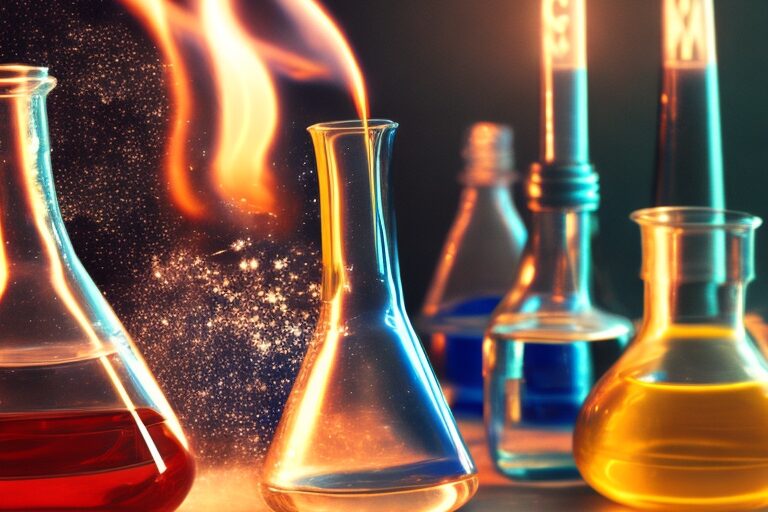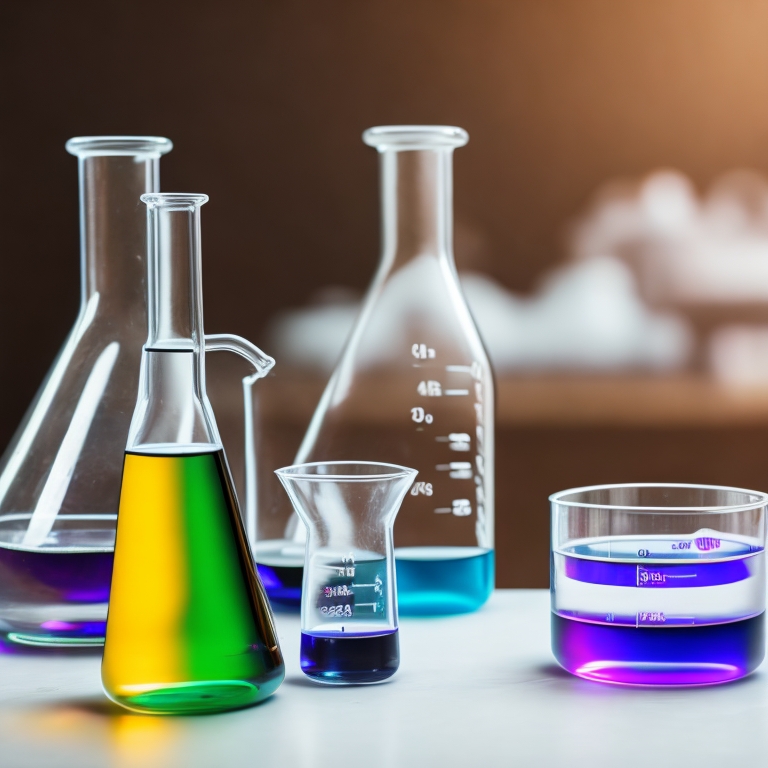Chemical Reactions and Equations
Chemical reactions are the foundation of chemistry. They are the processes by which substances are transformed into new substances with different properties. Chemical equations are a way of representing chemical reactions in a concise and informative way.

There are many different types of chemical reactions. Some of the most common types include:
- Combination reactions: Two or more substances combine to form a single new substance.
- Decomposition reactions: A single substance breaks down into two or more simpler substances.
- Displacement reactions: One element displaces another element from a compound.
- Double displacement reactions: Two compounds exchange ions to form two new compounds.
- Redox reactions: Oxidation-reduction reactions, or redox reactions, involve the transfer of electrons between atoms or molecules.
Energy Transformations
Chemical reactions can also involve energy changes. Some reactions release energy, while others absorb energy. Reactions that release energy are called exothermic reactions, while reactions that absorb energy are called endothermic reactions.
Balancing Chemical Equations
Balancing chemical equations is a crucial skill in chemistry. It ensures that the law of conservation of mass is upheld, stating that matter cannot be created or destroyed during a chemical reaction. By applying stoichiometry principles, we can determine the correct coefficients for each compound and element in an equation.
Writing Chemical Equations
Writing chemical equations is a means of expressing chemical reactions in a concise manner. It involves using chemical formulas and symbols to represent the reactants and products involved. Chemical formulas denote the composition of substances, while symbols represent elements.
Physical and Chemical Changes
In addition to chemical reactions, it is important to differentiate between physical and chemical changes.
- Physical changes: Physical changes only alter the physical properties of a substance, such as shape, state, or size. These changes do not result in the formation of new substances. Examples include melting, freezing, and evaporation.
- Chemical changes: Chemical changes involve the formation of new substances with different properties. These changes are accompanied by the rearrangement of atoms and the breaking or formation of chemical bonds. Examples include burning, digestion, and fermentation.
Effects of Oxidation Reactions in Our Daily Life
Oxidation reactions have a profound impact on our daily lives. From the rusting of iron to the browning of fruits, these reactions are ubiquitous. Understanding the effects of oxidation reactions helps us comprehend phenomena like corrosion, food spoilage, and even the metabolic processes occurring within our bodies.
Conclusion
Chemical reactions and equations are essential concepts in chemistry. By understanding these concepts, we can gain a deeper understanding of the world around us and the processes that shape it.
- chemical reactions
- equations
- chemistry
- types of chemical reactions
- oxidation-reduction reactions
- displacement reactions
- double displacement reactions
- redox reactions
- exothermic and endothermic reactions
- balancing chemical equations
- writing chemical equations
- chemical formulas and symbols
- physical and chemical changes
- oxidation reactions
- corrosion
- food spoilage
- metabolic processes

